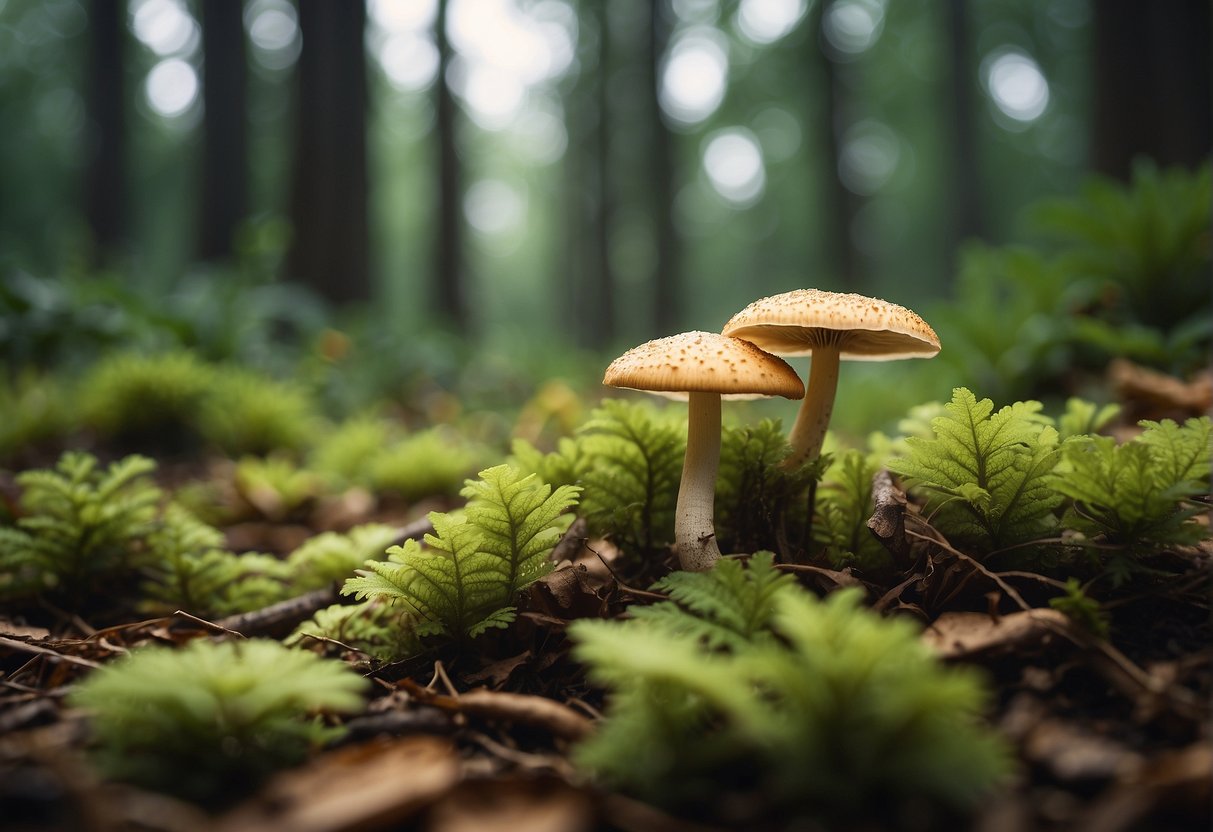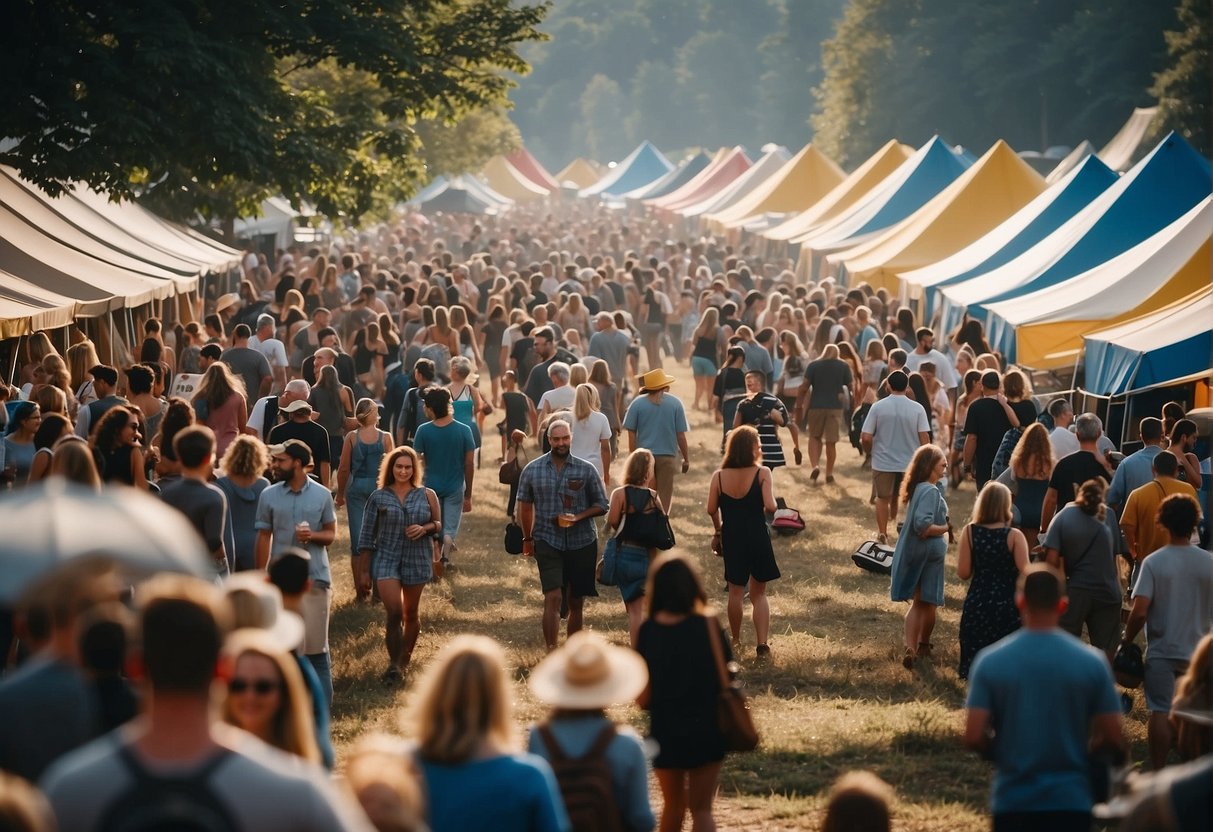
Kentucky’s lush woodlands are a treasure trove for mushroom enthusiasts, offering a diverse array of edible mushrooms throughout the year. Whether you’re trekking through the dense deciduous forests or exploring the outskirts of a hickory stand, the rich ecosystem provides a perfect backdrop for foraging. Your curiosity and mushroom knowledge can turn a simple hike into an exciting quest for wild, edible fungi.

As you navigate the rolling hills and vibrant greenery of the Bluegrass State, keep an eye out for some of the prized species like morels in early spring, chanterelles as the summer warmth sets in, or the unmistakable lion’s mane mushroom come fall. Foraging for mushrooms in Kentucky is not just about the harvest; it’s about connecting with nature and understanding the subtle cues that indicate where these culinary delights can be found.
When foraging for mushrooms in Kentucky, correctly identifying edible types is crucial for your safety. The following specifics will guide you through distinguishing edible varieties based on their characteristics, anatomy, and habitat.
To safely identify edible mushrooms, pay attention to distinct features. Many edible mushrooms have certain color patterns. Morels, sought after for their nutty flavor, exhibit a honeycomb-like cap in colors ranging from tan to dark brown. On the other hand, Lion’s Mane mushrooms are recognizable by their unique, white, shaggy spines. Be cautious, as resemblance to poisonous species is possible, stressing the importance of thorough identification.
Understanding mushroom anatomy is essential. The cap can vary greatly, having smooth, wrinkled, or spiky textures. The stem also provides clues; for instance, the Velvet Foot mushroom has a distinctive yellow-orange cap with a darker center and velvety stem. Note the gills underneath the cap, as their spacing and attachment to the stem can help in identification. Remember that both color and shape are key when examining a mushroom’s parts.
Where a mushroom grows can provide insight into its edibility. Morels prefer deciduous hardwoods like oak and maple, while the Giant Puffball often appears in open meadows or grassy areas. Be aware mushrooms like Shaggy Mane tend to grow in disturbed grounds. The presence of certain trees and the type of ground cover can signal a fruitful foraging spot for edible varieties.
Remember, while some mushrooms are a delicious addition to a meal, misidentification can lead to serious health risks. Always double-check your findings with a credible guide or expert when you’re out in the woods to ensure a safe and enjoyable foraging experience.
Kentucky’s diverse forests offer a range of edible mushrooms that you can forage, from the sought-after morels in spring to the versatile oyster mushrooms found nearly year-round.
Morels are a true prize for Kentucky foragers, highly esteemed for their distinctive honeycombed caps. Surfacing in the spring, they often reside near elm, ash, and apple trees. Proper identification is critical as morels have toxic look-alikes; always cut them in half longitudinally to confirm they are hollow from stem to tip.
Oyster mushrooms, recognizable for their fan-shaped, oyster-like caps, grow on the sides of living or decomposing trees. They are not only cherished for their mild, anise-like flavor but also for their availability in multiple seasons. These mushrooms are one of the few types that you may encounter throughout the year, especially on fallen hardwoods like beech and aspen.
The golden chanterelle is a summertime favorite, flaunting a vibrant yellow hue and a delicate, peppery taste. You’ll find these mushrooms in moist, well-drained areas amidst hardwoods, specifically oak. When searching for chanterelles, pay attention to their gill structure; unlike the true chanterelle, false ones have forked and cross-veined gills, so knowing the difference is a safety essential.
Remember, while foraging for these edible treasures, it’s imperative to always carry a field guide and to never consume a mushroom unless you’re 100% certain of its identity. Happy mushroom hunting!

Embarking on a mushroom hunting adventure through Kentucky’s woodlands not only offers a connection to nature but also requires a commitment to conservation and responsibility. These best practices ensure that you enjoy the forests and their diverse wildlife sustainably.
Your adventures in mushroom foraging should align with the ethos of conservation and respect for the rich Kentucky forests, ensuring they remain a welcoming place for all who seek the thrill of the hunt.

Kentucky offers a bounty of edible mushrooms and invites you to celebrate this natural heritage through various mushroom festivals and community events. As someone who appreciates the great outdoors and the thrill of foraging, these gatherings are perfect for both learning and leisure.
One such notable event is the Mountain Mushroom Festival in Irvine, Kentucky. Held annually, this festival is a tribute to Appalachian culture and morel mushrooms – a local favorite. It’s also a community-centric event that celebrates other aspects of regional pride like the Kentucky agate.
During the festival, you can:
Another event that brings together mushroom enthusiasts is the Kentucky Mushroom Festival, where the focus is on the impact and nutrition of mushrooms. Set in the picturesque Barren River Magic area, it combines education with nature, highlighting the role of fungi in the ecosystem.
Furthermore, beyond the excitement of the hunt and the taste of a well-prepared wild mushroom dish, these festivals are a place for you to connect with a like-minded community. Here, friendships are forged over shared interests in the wonders of mycology and the great Kentucky woodlands.
Join in and deepen your understanding while celebrating the rich mycological diversity of Kentucky.